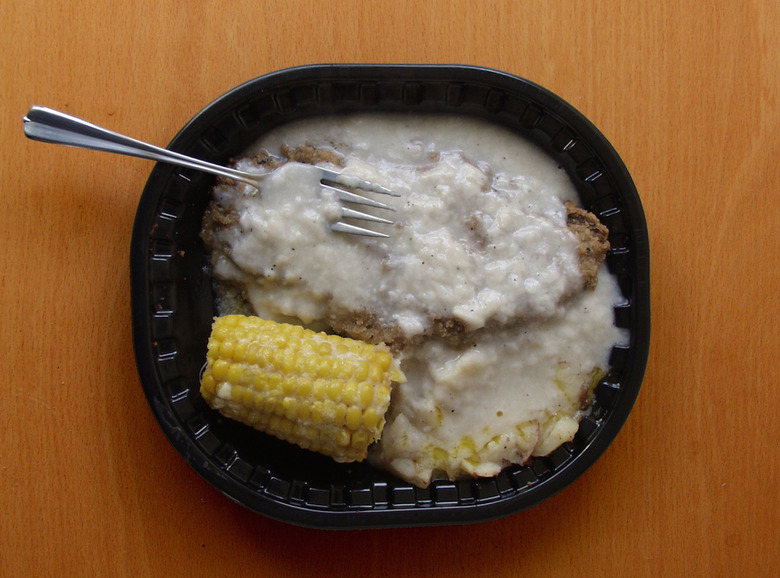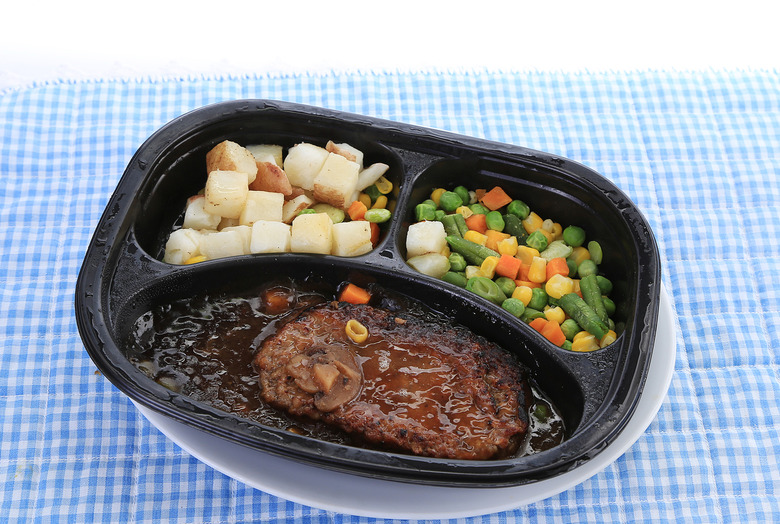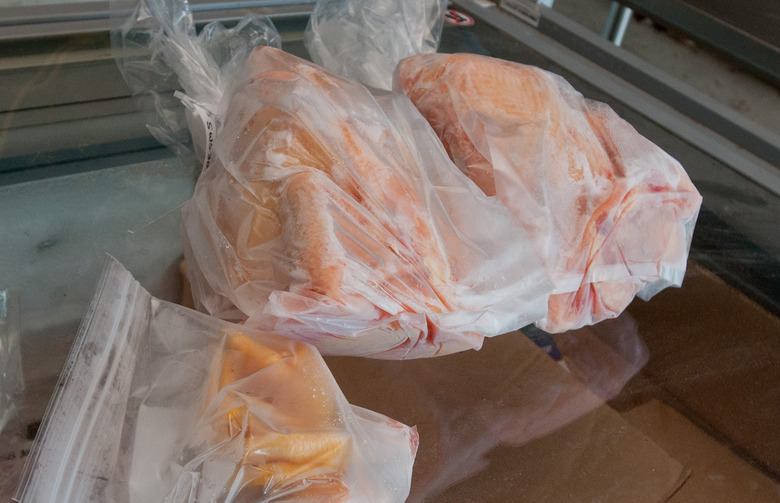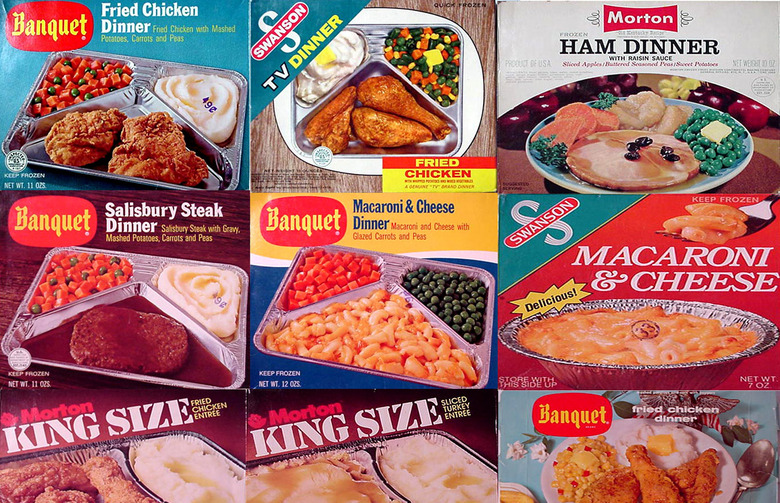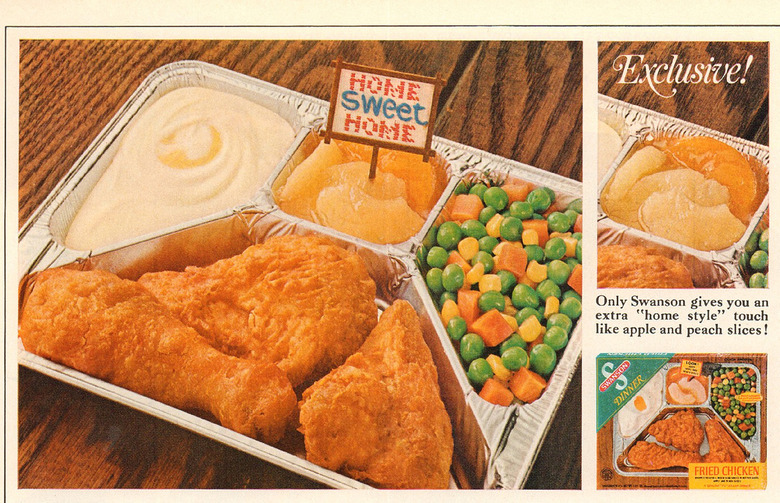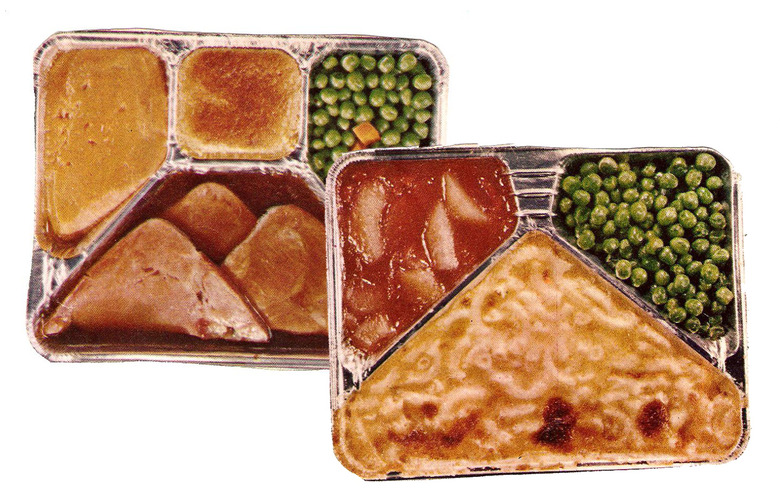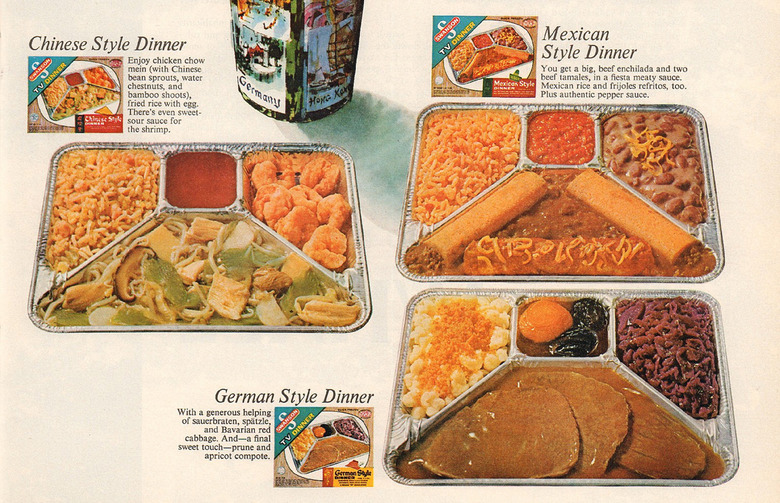10 Things You Never Knew About TV Dinners
Even the healthiest eaters have a special place in their hearts for TV dinners. Nearly everyone grew up eating frozen dinners, and there's something about popping a frozen tray in the microwave and having a steaming multi-dish meal ready in minutes that brings out the kid in all of us. But even if you're eating a Lean Cuisine for lunch right now, we bet that there are some things you didn't know about this American classic.
The Term ‘TV Dinner’ Is Trademarked
Like Xerox, Band-Aid, and Thermos, "TV Dinner" is a trademarked term that's been "genericized" over the years. Even though the term was originally a brand name for Swanson's frozen dinners, it's become synonymous with any supermarket-bought packaged frozen dinner.
The Tray Was Modeled After Those Used by Airlines
There Are Conflicting Theories as to Why They’re Called TV Dinners
Most people think that TV dinners got their name because they were geared toward being eaten in front of another major 1950s innovation, the television. However, another theory is that they were named TV Dinners because early packaging featured a TV set, and some say that it's because early versions resembled 1950s-era TV sets.
The Origin Story Is Surprisingly Contentious
The oft-repeated origin story of Swanson's TV Dinners is that executive Gerry Thomas single-handedly conceived of the idea after learning that the company had a huge surplus of frozen turkeys due to poor Thanksgiving sales. Not only did he claim that he designed the three-compartment aluminum tray after encountering a similar one on an airplane, he also said that he coined the term "TV Dinner." However, after his passing, Swanson countered that the surplus turkey story was made up, that company owner W. Clarke Swanson was actually the one who had the idea to sell a product that had actually already existed for some time, and that the company's marketing department came up with the name.
More than 10 Million Were Sold in Its First Year of Production
When Swanson decided to roll out TV dinners, they estimated the first year's production to be at around 5,000 units. In reality, more than 10 million were sold in that year alone!
Microwave TV Dinners Didn’t Come Around Until 1986
Popping a TV dinner in the microwave is actually a relatively recent phenomenon. A microwave-safe plastic container wasn't invented until the mid-1980s, and until 1986 all frozen dinners had to be heated in the oven.
They’re Unhealthier Than You May Think
During the cryogenic freezing process (aided by liquid nitrogen), the flavor of the food being frozen is degraded. For this reason, most frozen dinners contain a whole lot more fat and sodium (which boost flavor) than you might realize. The product also needs to be stable for a very long time, which necessitates the use of trans fat-laden partially hydrogenated oils. For example, Hungry-Man's boneless fried chicken contains 860 calories, 39 grams of fat, and 1,350 milligrams of sodium.
They’re Much Harder to Formulate Than You Might Realize
When you think about it, it's not easy to come up with a combination of items to be packaged together in a frozen dinner. Not only do all the flavors need to work together, they all need to require the same amount of microwave time. So for example, if the potatoes take five minutes to reach the ideal temperature but the turkey only takes three, then that turkey will be dried out and gross by the time the potatoes are ready.
Companies Are Hard at Work Trying to Change Our Perception of Frozen Dinners
Not all frozen dinners come from Banquet, Swanson, and Stouffer's nowadays. Frozen dinner technology is constantly improving, and legitimately healthy frozen dinners have been developed by companies like Kashi and Amy's, as well as startups like Luvo and LYFE Kitchen, for which healthy restaurant-quality meals are steamed inside paper pouches.
They Haven’t Been Officially Called TV Dinners Since 1962
Yep: Swanson dropped the "TV Dinner" moniker in 1962, but the name clearly stuck.

